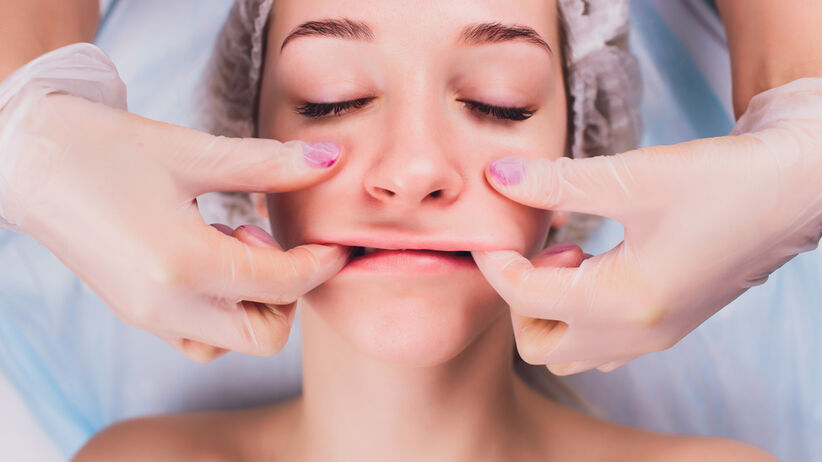The name of the massage comes from the Latin words trans – through and buccalis – cheeks.
The technique of this massage involves pressing the facial tissues from inside the mouth and the outer part of the cheeks. The effectiveness of the treatment is so high that bucal massage is used not only by movie stars who want to improve their beauty, but also by people after accidents or strokes.
The results of the masage
The massage relieves muscle tension, helps with contractures, trismus and paresis, and restore the elasticity of deep structures. Massaging the cheeks and appropriately pressing from the inside to the outside restores the youthful oval of the face. The deep muscles in the area of the cheeks, nose and lips become more flexible, and wrinkles become significantly smaller. The eyes become optically larger and the eyelids lifted. The visibility of the double chin is also reduced, the corners of the mouth and cheeks are lifted, so the face looks younger and brighter.
As a result of the pressing technics, the skin is better oxygenated and gains youthful elasticity. The face becomes firmer and rejuvenated.
After the treatment a lot of tension is released which helps in decreasing the frequency of migraine and headaches.
Who are transbucal massage treatments recommended for?
The method of bilateral facial stimulation, which is transbucal massage, is used for specific cosmetic and medical cases. However, almost all patients can benefit from the presented therapy. This applies especially to people who feel cramps, tingling or numbness while eating or speaking. These are most often symptoms of excessive tension of the facial muscles, which can be reduced in time. As a result, this can prevent much more serious problems.
The most important indications qualifying for the procedure include:
- facial wrinkles which are a sign of skin aging,
- neurological symptoms of increased facial muscle tension,
- paralysis after: paralysis, stroke or severe allergic reaction,
- visible scars resulting from an accident or other mechanical trauma,
- skin dystrophy
Contraindications:
- acute inflammation of the facial nerves,
- abnormal blood coagulation,
- some mechanical or pathological damage to the mucous membranes,
- dermatological diseases in the oral cavity,
- gum and periodontal diseases.
